
200 Hr Hatha Yoga TTC
Enroll in Sunshine Yoga School’s 200-hour yoga teacher training course to achieve certification as a Yoga Alliance registered yoga teacher (RYT 200) and kickstart your yoga career. Our comprehensive and professional program caters to practitioners of all levels, covering various aspects of yoga, from asanas to kriyas, and equips you to become an independent yoga instructor.
Join us at Sunshine Yoga School for a fulfilling experience, initiating your rewarding journey to discover your true self through yoga. Our 200-hour yoga teacher training in Rishikesh, India, ensures a deep understanding of yoga, encompassing both theoretical knowledge and practical skills.
Why Choose this Course?
This residential 200 hours Hatha Yoga Career Development TTC aims at imparting holistic Yoga Teacher Training. At Sunshine Yoga School, we focus on strengthening the foundational knowledge of Hatha Yoga and all the associated aspects such as meditation, mudras, bandhas etc. While individual Yoga Practitioners too will benefit from this course immensely, the idea behind this course is to create Yoga Teachers who have a strong base in Hatha Yoga, various teaching methodologies and creating their own lesson plans..
Why Choose Us?
As one of the best yoga training centers in Rishikesh and in India, we pride ourselves in imparting quality education and an effective ecosystem within which our students can grow and excel in their Yogic Journey.
Our 200 hours Hatha Yoga TTC offers expertise in not just Hatha Yoga, but also equips the Yoga Teachers of tomorrow with all the skills and tools required to set up their own schools and practices.

Course Modules

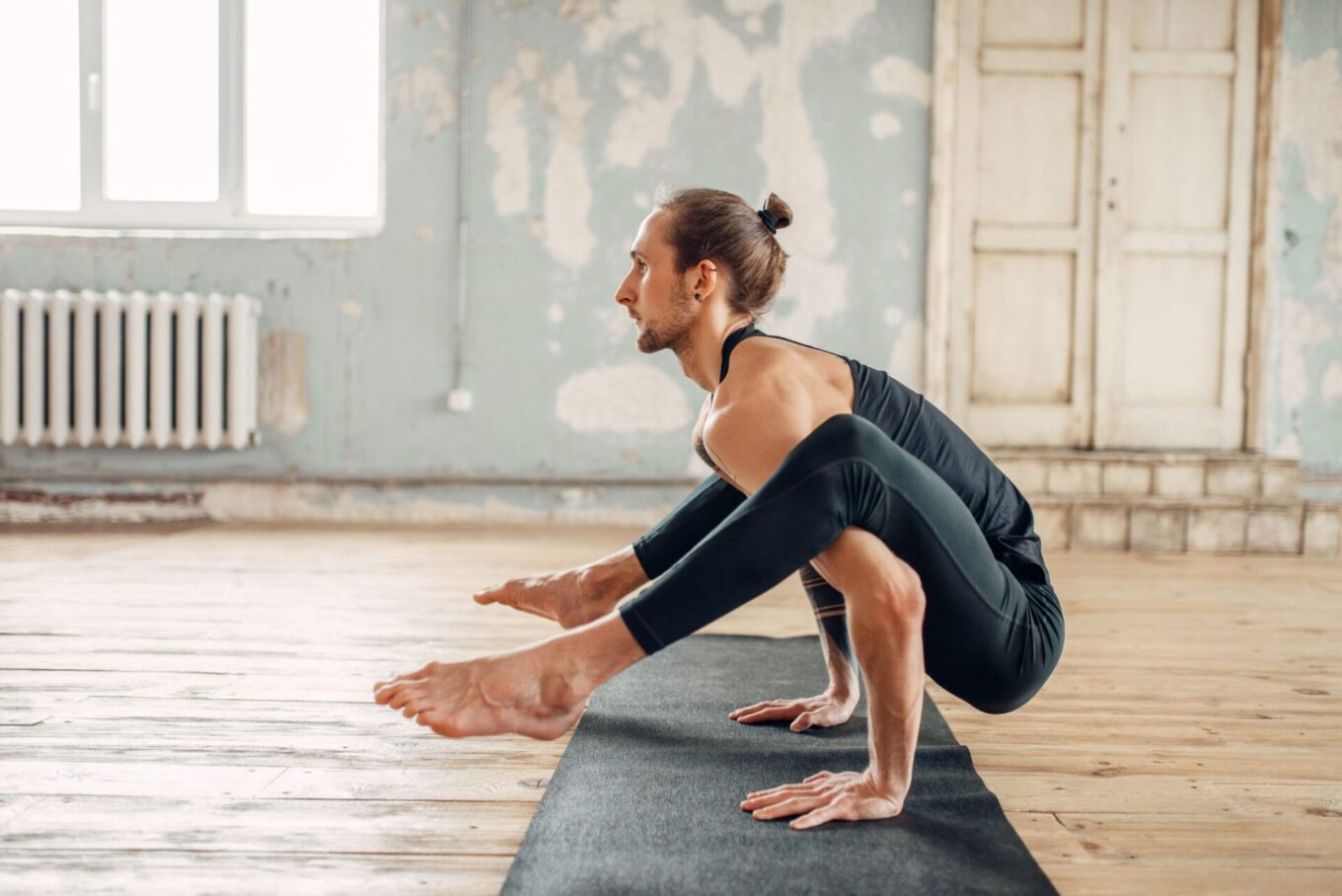
Hatha Yoga (Asana)
This session covers yoga's history, philosophy, and development from ancient times to the present, including important texts. You'll understand yoga's goals and how practices fulfill them, connecting your personal practice to roots for more meaning and better progress evaluation
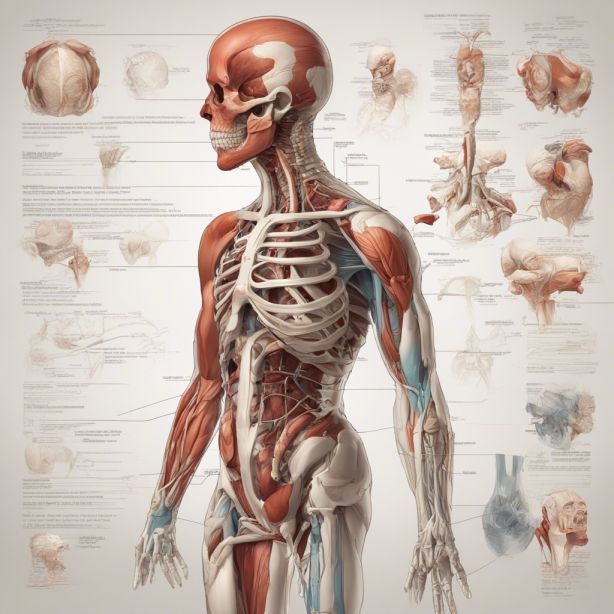
Yoga Anatomy and Physiology
While gaining understanding of goals and philosophy of yoga and having overviewed the practices that ancient yogic used to meet these goals, we will look at the same practices from the perspective of modern science. We will see how the effectiveness of yogic practices is explained in traditional, anatomical and physiological terms. This topic will also give you understanding of safety during practice. Being aware of how body works, what are the most vulnerable points, how diseases originate and how they affect systems of body, you will learn how to build the practice safely for all students and adapt it for specific needs.
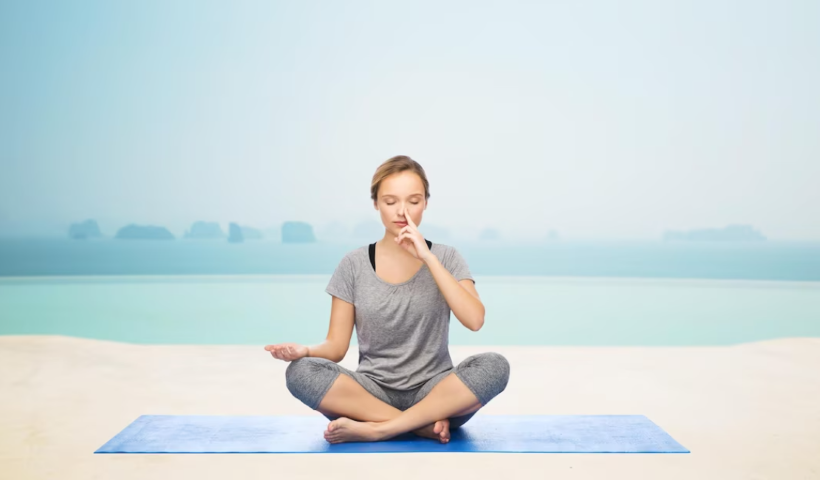
Pranayama
Though you will have pranayama practices on each daily practice classes, you will specially have some classes dedicated to pranayama in which you will learn the following breathing techniques – anulome-vilome pranayama, nadi sodhan pranayama, sitkari, ujjayi, kapalbhati, etc. We will also have lectures on philosophy of pranayama, philosophy of panch prana, etc.
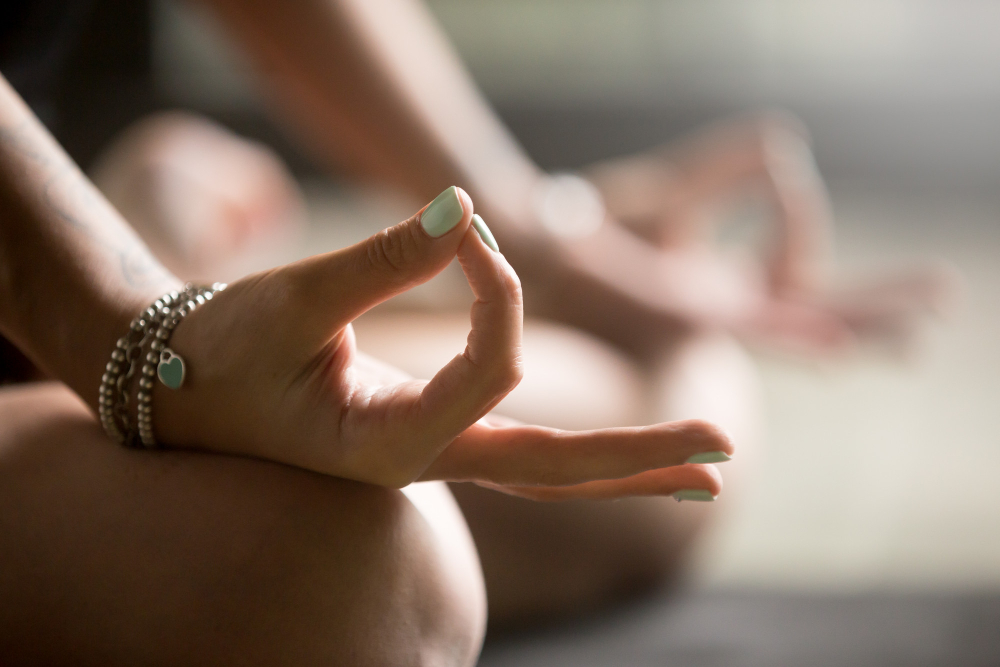
Mudra (Gesture or Attitude)
Maha Mudra or the Great Gesture is the first Mudra mentioned in both Hatha Yoga Pradeepika and Gheranda Samhita. In Sanskrit, Maha means great and Mudra means a gesture, attitude or seal. Maha Mudra is a technique to raise the human consciousness to higher levels and for improving health. It is highly recommended by yogis. Maha Mudra is best done in the morning when the stomach is empty. It creates a good ambience for meditation practices, hence should be done before the start of meditation.
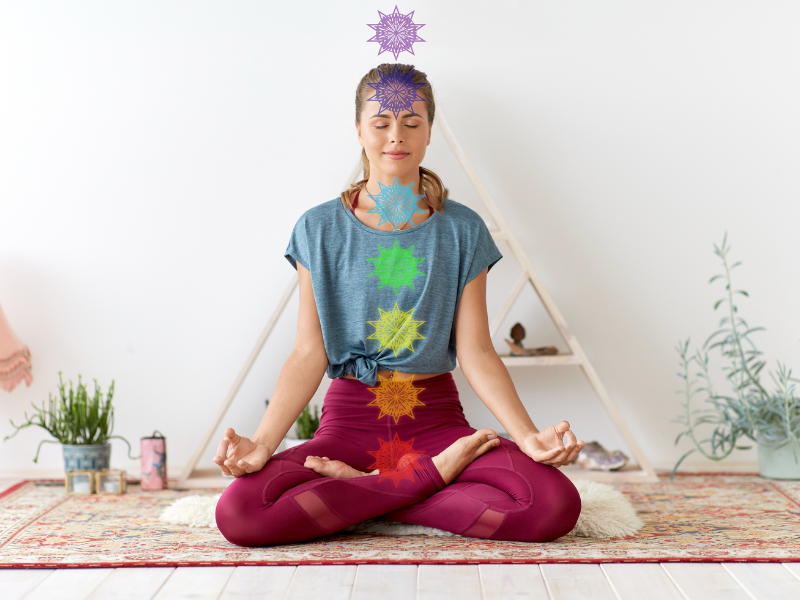
Bandha (Yogic locks)
Bandha or a yogic lock enables a yogi to block and direct the flow of pranic energy in certain way to change the energy pattern in the body. Bandhas not only modifies the flow of pranic energy through the nadis (energy meridians), but also modifies the flow of nerve currents in the nervous system and blood flow through the blood vessels. Bandhas are mentioned in most classical yoga texts like Hatha Yoga Pradeepika, Gheranda Samhita, Siva Samhita, etc. In yogic scriptures, the Bandhas are clubbed along with mudras or yogic gestures. The reason for it is that both Bandha and Mudra modifies the energy pattern in the body to give rise to heightened levels of awareness.
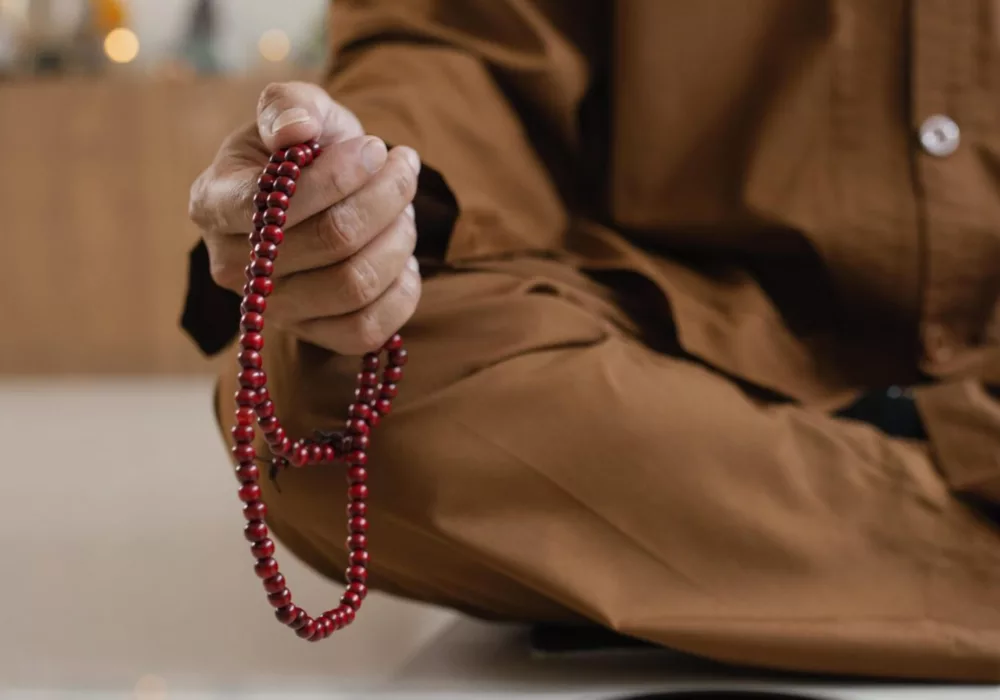
Mantra Chanting
Chanting has been an integral part of all religions through the ages. As we sit together in one place, we have different thoughts. But when we start chanting, there is one thought and one rhythm in all our minds. All minds become one. This oneness creates a profound energy that enlivens us.
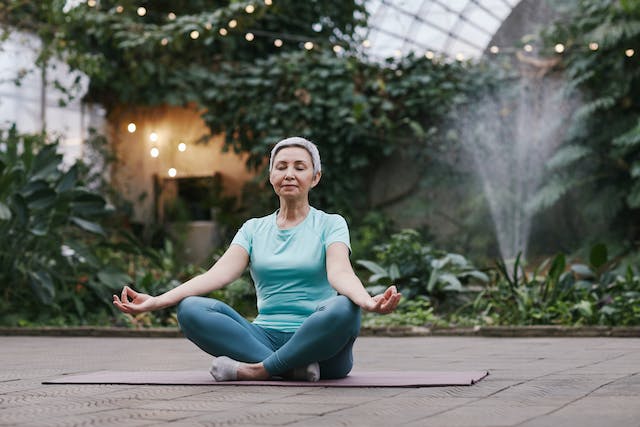
Meditation
This module covers the importance of meditation in Yogic Practices. You will learn why meditation is important, different meditative techniques and the benefits gained by daily meditation
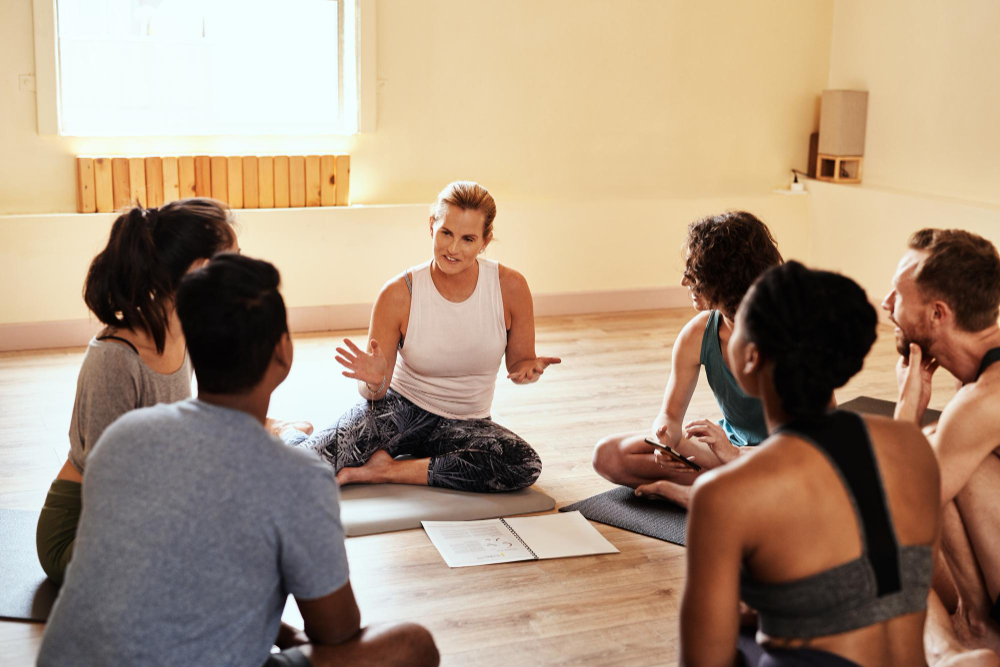
Yoga Philosophy / Life Style Ethics
The main philosophy of yoga is simple: mind, body and spirit are all one and cannot be clearly separated. Yet there is a multitude of philosophical ideas developed by looking into the deeper dimensions of the body, mind and spirit.

Shatkarma
Shatkarma is a set of yogic purifications of the body. It is a part of yoga sadhanas or practice. Their purpose is to remove impurities & toxins accumulated in the body and are clinical in nature. It cure diseases and prepare the body for Asanas and Pranayama.

Daily Schedule
Outline of the Schedule (Subject to Changes):
5:30 AM – Wake up
6:00 to 7:15 AM – Pranayama, Meditation, Chanting, Shatkarma
7:15 to 7:45 AM – Tea Break
7:45 to 9:00 AM – Hatha Yoga
9:00 to 10:00 AM – Breakfast
10:30 to 12:00 PM – Yoga Philosophy
12:00 to 12:30 PM – Tea Break
12:30 to 1:30 PM – Therapeutic Alignment, Human Anatomy/Physiology
1:30 to 2:30 PM – Lunch
3:00 to 4:00 PM – Rest/Self-Study
4:30 to 6:30 PM – Postures/Alignment Hatha Movement
7:00 to 8:00 PM – Dinner
9:30 PM – Sleep (Lights out)

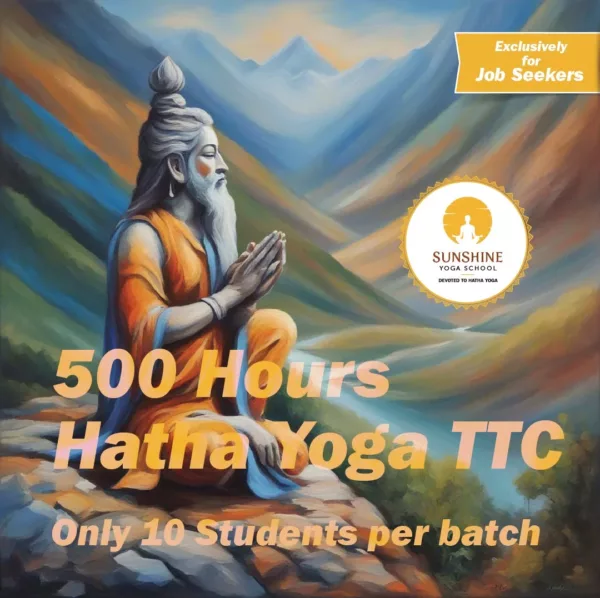

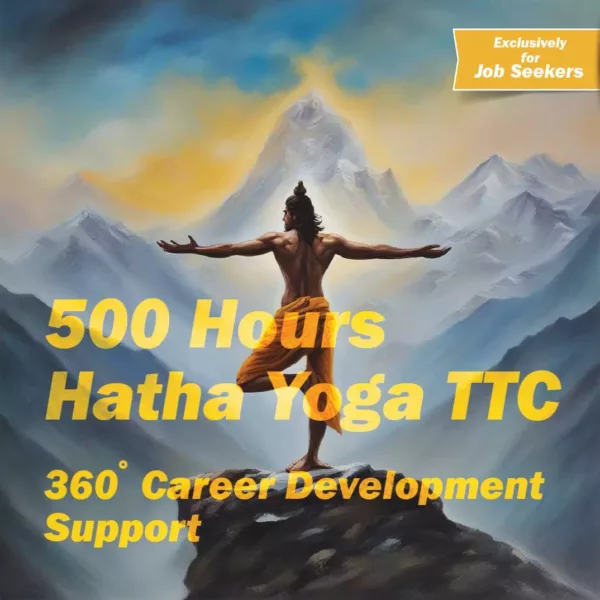

Hatha Yoga (Asana)
This session covers yoga’s history, philosophy, and development from ancient times to the present, including important texts. You’ll understand yoga’s goals and how practices fulfill them, connecting your personal practice to roots for more meaning and better progress evaluation.



Meditation
This module covers the importance of meditation in Yogic Practices. You will learn why meditation is important, different meditative techniques and the benefits gained by daily meditation



Yoga Anatomy and Physiology
While gaining understanding of goals and philosophy of yoga and having overviewed the practices that ancient yogic used to meet these goals, we will look at the same practices from the perspective of modern science. We will see how the effectiveness of yogic practices is explained in traditional, anatomical and physiological terms. This topic will also give you understanding of safety during practice. Being aware of how body works, what are the most vulnerable points, how diseases originate and how they affect systems of body, you will learn how to build the practice safely for all students and adapt it for specific needs.



Pranayama
Though you will have pranayama practices on each daily practice classes, you will specially have some classes dedicated to pranayama in which you will learn the following breathing techniques – anulome-vilome pranayama, nadi sodhan pranayama, sitkari, ujjayi, kapalbhati, etc. We will also have lectures on philosophy of pranayama, philosophy of panch prana, etc.



Mudra (Gesture or Attitude)
Maha Mudra or the Great Gesture is the first Mudra mentioned in both Hatha Yoga Pradeepika and Gheranda Samhita. In Sanskrit, Maha means great and Mudra means a gesture, attitude or seal. Maha Mudra is a technique to raise the human consciousness to higher levels and for improving health. It is highly recommended by yogis. Maha Mudra is best done in the morning when the stomach is empty. It creates a good ambience for meditation practices, hence should be done before the start of meditation.



Bandha (Yogic locks)
Bandha or a yogic lock enables a yogi to block and direct the flow of pranic energy in certain way to change the energy pattern in the body. Bandhas not only modifies the flow of pranic energy through the nadis (energy meridians), but also modifies the flow of nerve currents in the nervous system and blood flow through the blood vessels. Bandhas are mentioned in most classical yoga texts like Hatha Yoga Pradeepika, Gheranda Samhita, Siva Samhita, etc. In yogic scriptures, the Bandhas are clubbed along with mudras or yogic gestures. The reason for it is that both Bandha and Mudra modifies the energy pattern in the body to give rise to heightened levels of awareness.



Yoga Philosophy / Life Style Ethics
The main philosophy of yoga is simple: mind, body and spirit are all one and cannot be clearly separated. Yet there is a multitude of philosophical ideas developed by looking into the deeper dimensions of the body, mind and spirit.

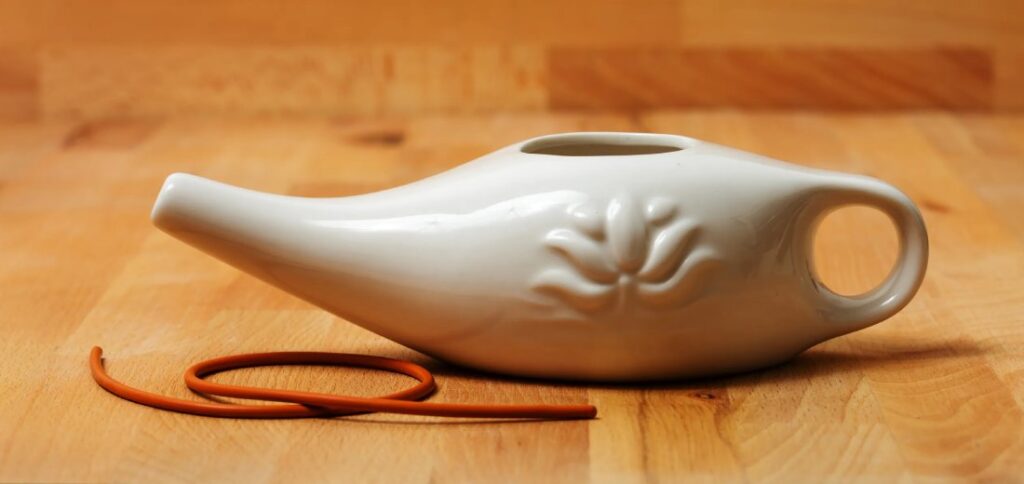

Shatkarma
Shatkarma is a set of yogic purifications of the body. It is a part of yoga sadhanas or practice. Their purpose is to remove impurities & toxins accumulated in the body and are clinical in nature. It cure diseases and prepare the body for Asanas and Pranayama.



Mantra Chanting
Chanting has been an integral part of all religions through the ages. As we sit together in one place, we have different thoughts. But when we start chanting, there is one thought and one rhythm in all our minds. All minds become one. This oneness creates a profound energy that enlivens us.

Our Instructors

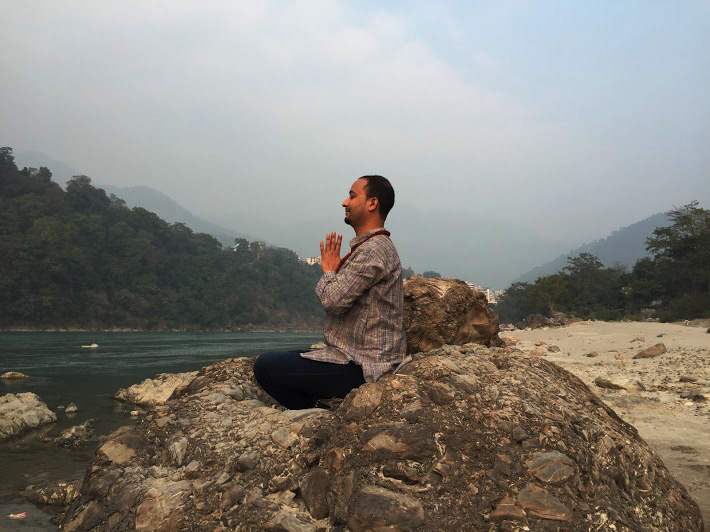
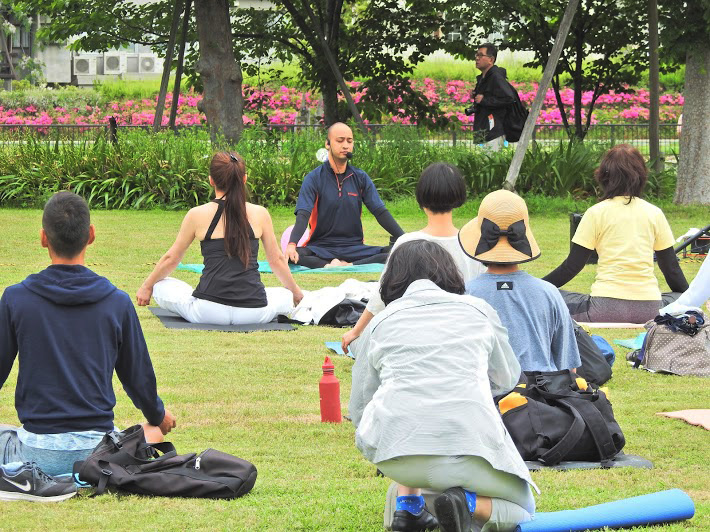
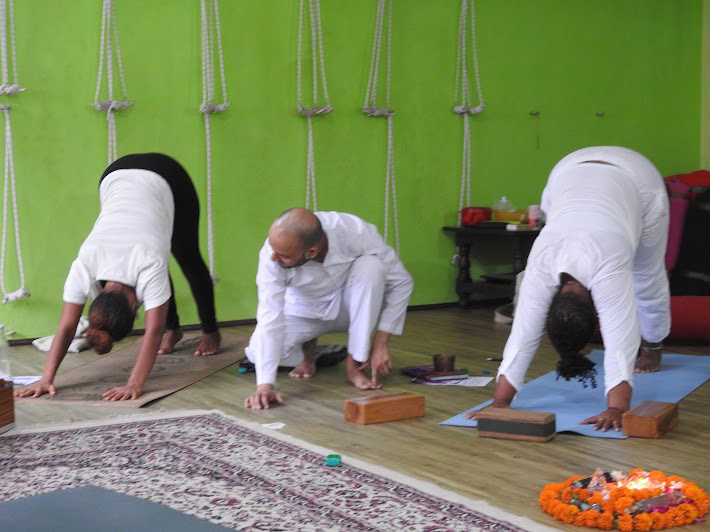
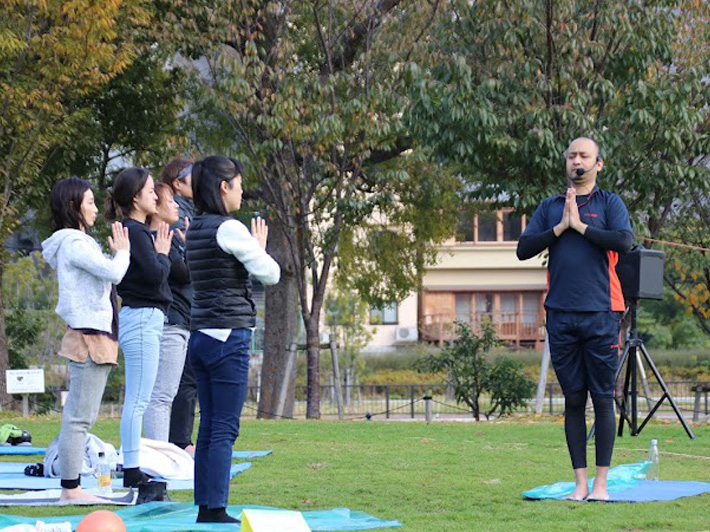
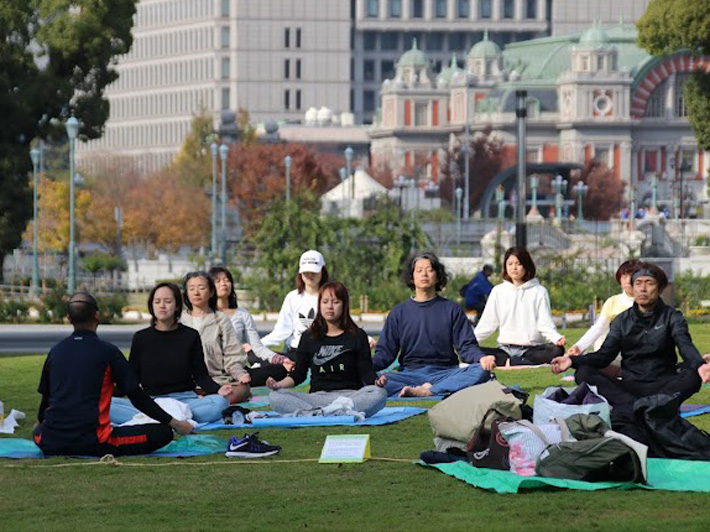
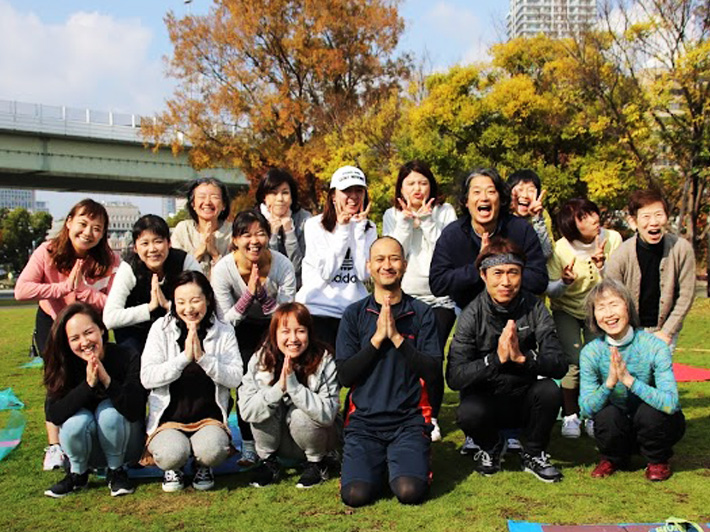

Founder & Director, Sunshine Yoga School, Rishikesh
Manoj Rawat, known as “Manu,” is a highly qualified individual in the field of yoga and holistic wellness. As the Founder and Director of Sunshine Yoga School in Rishikesh, his credentials are a testament to his dedication and expertise. His journey began at the renowned “Vedic Research Institute Kanvashram”” in Uttarakhand, where he studied from June 2008 to March 2011. He then continued his studies focusing on Yog Darshan (Yoga Sutra of Maharishi Patanjali) under the guidance of Shri Swami Ananda Vesh ji at the “Vishwa Shanti (world peace) Mission ” ashram for two years. Expanding his knowledge and skill set, he studied Iyengar Yoga at the acclaimed “Yoga Study Center” in Rishikesh from January to June in 2009. In the same year, he deepened his understanding of Acupressure at the “Jee HelpLine Training & Treatment Center.” Finally, he further enriched his knowledge by studying Ayurveda at the prestigious “Vishwanath Ayurveda Research & Development Foundation” in Rishikesh.
With a passion for sharing his knowledge, Manu taught yoga classes and workshops at various establishments, including “High Bank Peasant Cottage” in Rishikesh, and Spirit Yoga Studio, Community centre, and charity events in Japan (Osaka) for a number of years. In 2015, he realised his vision and opened Sunshine Yoga School in Rishikesh, in order to continue spreading the transformative power of yoga. He holds multiple qualification certificates, including International Yoga & Therapist, Acupressure Therapist, and Ayurvedic Therapist. These certifications reflect his passion and dedication to holistic healing and his ability to integrate various modalities into his teaching at Sunshine Yoga School.
Meditation & Philosophy Teacher
With over 40 years of teaching experience in Yoga and Indian Philosophy, Guru Buddhi Prakash Ji has shared his wisdom globally, serving as a guest teacher at Om Shanti Om Yoga Ashram and conducting seminars in Rishikesh and various parts of India. In recognition of his contributions, he was honoured with the prestigious Yash Bharti Award in 2015 by the Chief Minister of Uttar Pradesh Government. His teachings and insights continue to inspire and guide seekers on their spiritual paths and leave a lasting impact.
Anatomy Teacher
Anand Thapa Ji, our valued Anatomy Teacher, graduated with a B.Sc. degree from H.N. B Garhwal University. Under the guidance of his teacher, Swami Ramji, he embarked on a transformative journey to learn and master the art of yoga. His deep and scientific study into yoga has allowed him to delve into the intricacies of this ancient practice. With a passion for research, he has explored innovative ways of implementing yoga in daily life, uncovering its profound benefits for holistic well-being. Since 2015, Anand Thapa Ji has been imparting his knowledge as a Yoga Anatomy teacher at Sunshine Yoga School. With Anand Thapa Ji’s guidance, students can gain a comprehensive understanding of the human anatomy in relation to yoga practice. His ability to break down intricate concepts enables students to grasp and apply anatomical knowledge, deepening their understanding of the physical and energetic aspects of yoga. Through his teachings, students can unlock a deeper connection to their bodies and enhance their practice with an informed and anatomically conscious approach.
Yoga Instructor
Yogacharya Deepak Semwal, was born in North Himalaya, Rishikesh, the revered global yoga capital. Guided by his esteemed grandfather, Acharya Mukund Ram Maithani, a renowned astrologer and priest, Yogi Deepak Semwal gained profound wisdom into the nature of astrology. He pursued his Sanskrit education at Gurukul Shri Darshan Maha Vidyalaya, and embraced yoga, meditation, and rituals from a young age. He also earned a master’s degree in Indian Philosophy and Indian Literature from Sampurnanda Sanskrit Vishwavidyalaya, Varanasi, India. Deepak Semwal further deepened his knowledge under the benevolent guidance of his Guruji, Shri Jay Krishna Semwalji. With expertise in horoscope analysis and an understanding of the celestial impact on the human body, he offers invaluable insights as a teacher at Sunshine Yoga School.

Daily Schedule
Outline of the Schedule (Subject to Changes):
6:00 to 7:15 AM – Pranayama, Meditation, Chanting, Shatkarma
7:15 to 7:45 AM – Tea Break
7:45 to 9:00 AM – Hatha Yoga
9:00 to 10:00 AM – Breakfast Break
10:30 to 12:00 PM – Yoga Philosophy
12:00 to 12:30 PM – Tea Break
12:30 to 1:30 PM – Therapeutic Alignment, Human Anatomy/Physiology
1:30 to 2:30 PM – Lunch
3:00 to 4:00 PM – Rest/Self-Study
4:30 to 6:30 PM – Postures/Alignment Hatha Movement

Additional Information
Course Fee Includes:
- Accommodation facilities with a private room and attached bathroom for your comfort and privacy.
- Free Wi-Fi service throughout the campus to stay connected with loved ones.
- 24-hour hot water facility.
- Free filter mineral water facility to keep you hydrated and healthy during the course.
- Three pure vegetarian meals per day (breakfast, lunch, and dinner) to nourish your body and mind.
- Two tea breaks (morning and evening) to keep you energized and focused throughout the day.
Study Materials:
- Main text book, Anatomy text book, Note book.
- Shatkarma Kit (Cleansing tools).
Recreational Activity:
- One Day Sightseeing near Rishikesh.
- One day ancient temple visit
Eligibility:
- At Sunshine Yoga School, we welcome individuals above the age of 18 years to enroll in our courses. However, we request that students inform us in advance of any medical conditions they may have, and provide proper certifications as required. It is important to note that we cannot be held responsible for any consequences that may arise as a result of lack of information.
- For the safety and well-being of all our students, we strongly advise pregnant women to consult with their physicians before enrolling in our courses. This will ensure that any necessary precautions or modifications can be made to ensure a safe and comfortable experience.
- At Sunshine Yoga School, we are committed to providing a supportive and inclusive learning environment for all students. If you have any concerns or questions regarding eligibility or medical conditions, please do not hesitate to contact us. Our team is always available to provide guidance and support as needed.
Terms & Conditions:
- At Sunshine Yoga School, we believe in promoting a Sattvic lifestyle during the course period, with a focus on simplicity, purity, and mindfulness. To ensure that all students can fully immerse themselves in the course, there will be no intoxications or fancy meals allowed for the duration of the course. Additionally, to maintain a distraction-free environment, friends or relatives are not allowed to visit during course timings, unless they are registered for the program.
- Our accommodation is designed to provide a simple and peaceful living space, with each student allotted one room with an attached toilet. Our meals are also prepared with a focus on purity and simplicity, following the principles of a Sattvic diet.
- Please note that fees, once paid, are non-refundable. However, in the event of a solid reason, if somebody has to withdraw, we may offer a fee adjustment or further dates of rejoining the program.
- For any grievances please contact the course coordinator.
- It is important to note that Sunshine Yoga School reserves the right to cancel a student’s candidature at any time during the course in the event of non-compliance with our code of conduct or any other forms of misconduct. We take the well-being and safety of our students and community seriously and will take appropriate action if necessary to maintain a harmonious and respectful learning environment.
Area Information:
Rishikesh is a sacred town nestled in the foothills of the Himalayas on the banks of the Ganges. There are restrictions on alcohol, egg, and meat. Drink only bottled water, which is readily available throughout the town.
Good medical doctor and dentist facilities are available.
Climate: Rishikesh climate is continental type, but the weather is pleasant as Rishikesh located at the foothills providing cool breeze. The best time to visit is from mid September to April.



